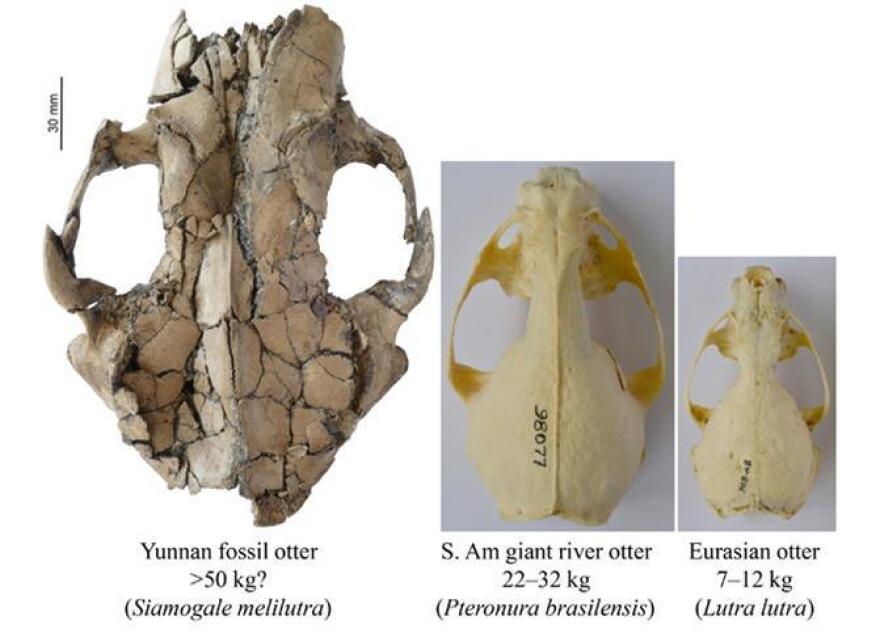Six million years ago, giant otters weighing more than 100 pounds lived among birds and water lilies in the wooded wetlands of China's Yunnan province.
That's according to new research from a team of scientists who discovered a well-preserved cranium of the newly-discovered species in an open lignite mine in 2010. They recently published their findings in the Journal of Systematic Palaeontology.
The researchers concluded that this wolf-sized prehistoric creature is "two to three times larger than any modern otter species," Denise Su, the head of paleobotany and paleoecology at the Cleveland Museum of Natural History, tells The Two-Way.
The fossilized cranium was nearly complete, but flattened to about an inch and a half thick. "The bones are pretty fragile, so we couldn't really reconstruct it physically," Su said. "So what we did is we took CT scans of the cranium, and then we digitally reconstructed it."
The cranium was particularly interesting because it revealed that the animal's teeth had "some badger features," Su explains. The species name Siamogale melilutra, is a nod to that – in Latin, meles means badger and lutra means otter.

And the completeness of the cranium provided the researchers with important information about how otters evolved, Su said. It shed light on a dental mystery in particular.
The giant otters possessed large bunodont, or round-cusped, teeth. Scientists have wondered whether different species of otters inherited these teeth from a common ancestor, or evolved them separately because they were eating similar things – a process known as convergent evolution.
But by comparing this specimen to modern and other fossil otters, Su says they found "these bunodont teeth actually arose at least four different times within the greater otter lineage." That finding suggests they emerged because of convergent evolution, rather than inheritance from a common ancestor.
The scientists initially found other bones from the species in 2009, including an upper arm bone. Su remembers looking at that bone and thinking, "This looks like an otter but it's huge. ... Is this really an otter?"
There are big questions about why the animal was so large and how it moved on land and in water.
"A lot of times in modern carnivores, the large size is partly due to subduing prey, so their prey is bigger and the carnivores also get bigger," Su explains. But the scientists think that this animal likely ate small creatures such as mollusks – so, "why the big size?"
Copyright 2021 NPR. To see more, visit https://www.npr.org.






